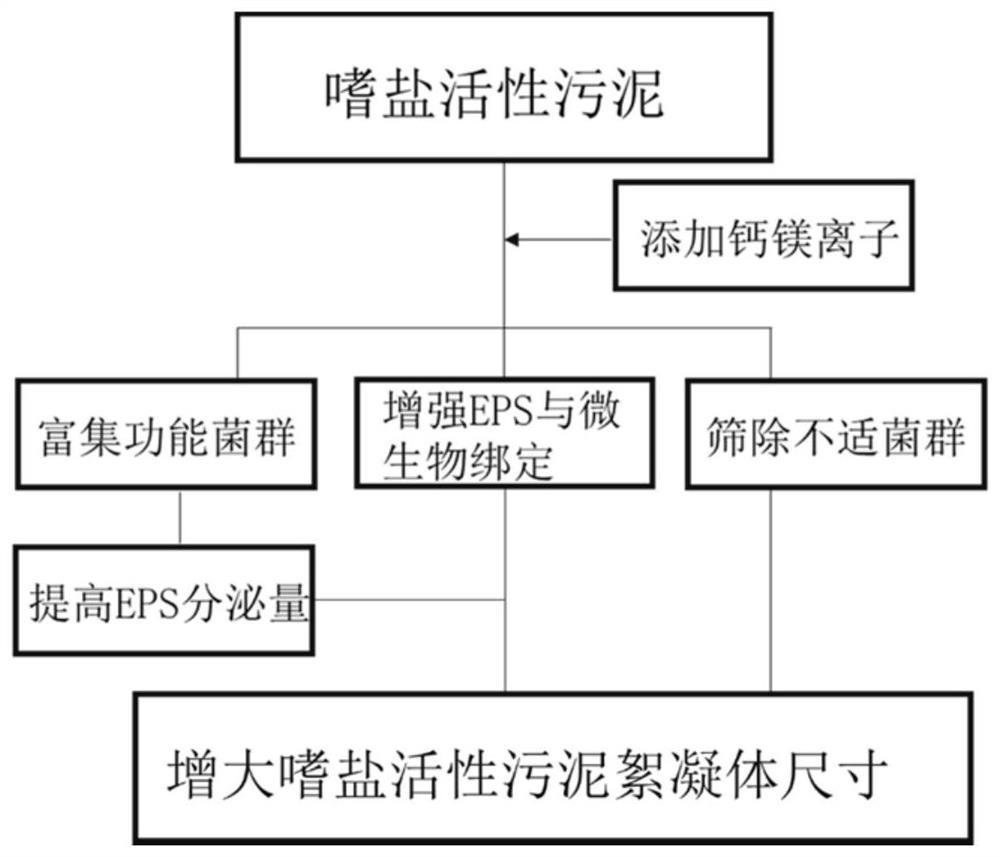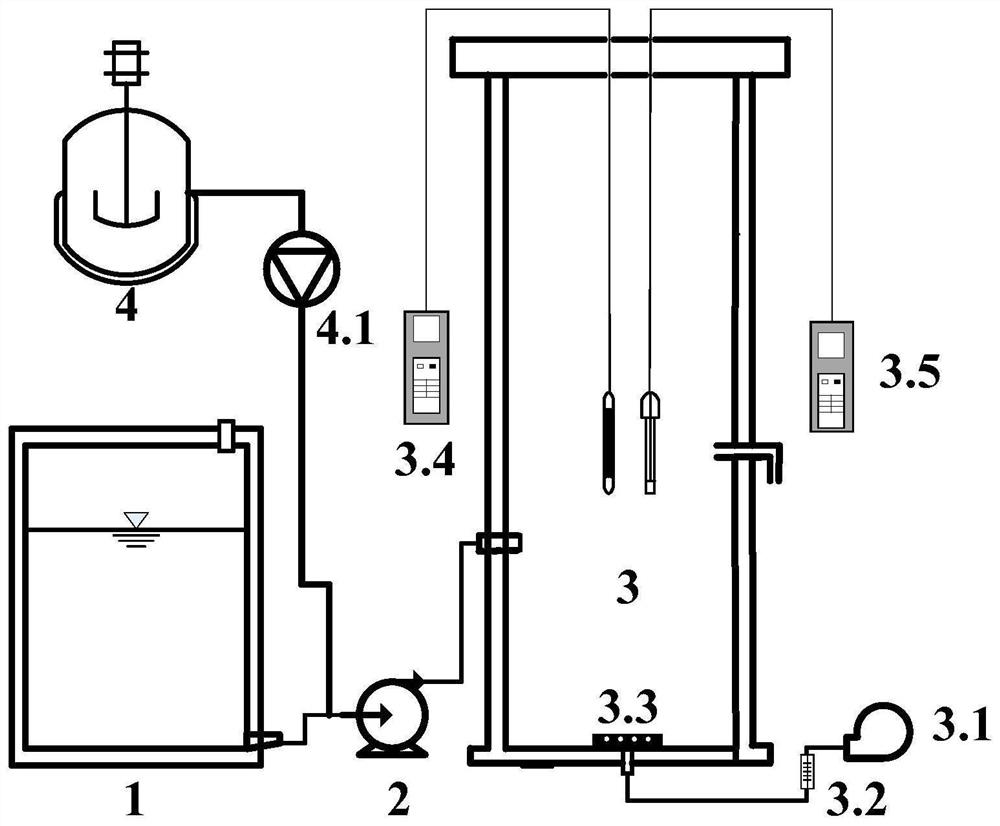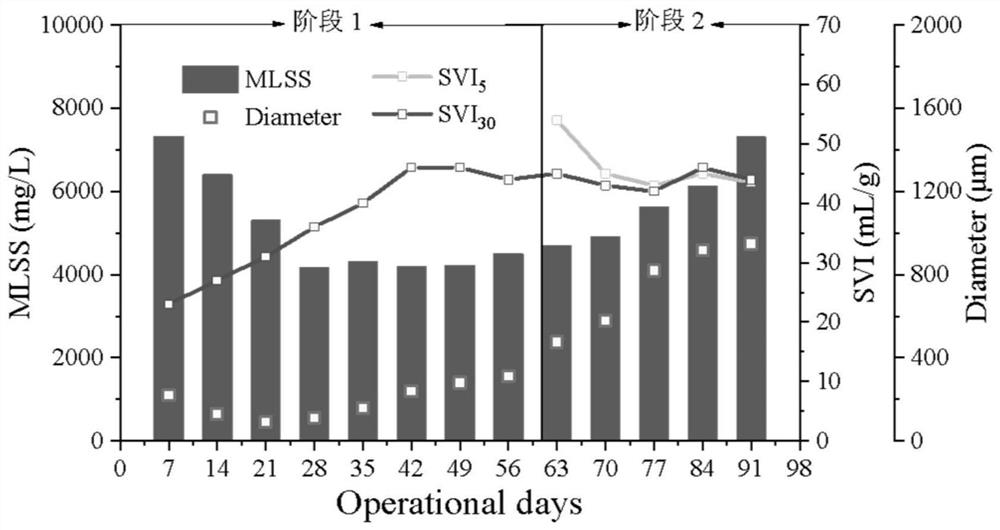Method for promoting halophilic activated sludge flora to secrete extracellular polymeric substances
An extracellular polymer, activated sludge technology, applied in chemical instruments and methods, water/sludge/sewage treatment, and adding compounds to stimulate growth, etc., can solve the problems of small sedimentation of halophilic sludge flocs. , to achieve the effect of small investment in project implementation, various forms and simple operation
- Summary
- Abstract
- Description
- Claims
- Application Information
AI Technical Summary
Problems solved by technology
Method used
Image
Examples
Embodiment Construction
[0031] The technical implementation of the present invention is further described in conjunction with the accompanying drawings and the following examples, and the present invention is not limited to the following examples.
[0032]The batch-type halophilic activated sludge process treats high-salt wastewater in the SBR reactor (3). The operation process of the system is as follows: in the water intake stage, the high-salt domestic wastewater with a salinity of 3% in the raw water tank (1) is injected into the SBR reactor (3) through the water intake peristaltic pump (2). In the aeration stage, the aeration device (3.1) is turned on, and the air is sent to the aeration pan (3.3) through the connecting pipeline and forms tiny bubbles into the reactor. Adjust the gas flow meter (3.2) to control the gas flow rate at 2L / min, and maintain the dissolved oxygen in the range of 3-4mg / L. The aeration phase lasted 4 h. In the aeration stage, the temperature in the SBR reactor (3) is r...
PUM
 Login to View More
Login to View More Abstract
Description
Claims
Application Information
 Login to View More
Login to View More - R&D
- Intellectual Property
- Life Sciences
- Materials
- Tech Scout
- Unparalleled Data Quality
- Higher Quality Content
- 60% Fewer Hallucinations
Browse by: Latest US Patents, China's latest patents, Technical Efficacy Thesaurus, Application Domain, Technology Topic, Popular Technical Reports.
© 2025 PatSnap. All rights reserved.Legal|Privacy policy|Modern Slavery Act Transparency Statement|Sitemap|About US| Contact US: help@patsnap.com



